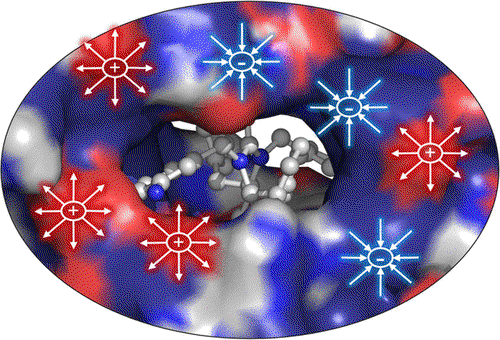
Abstract
We provide in this work a technical perspective about enzyme design encounters various challenges associated with the application of fundamental principles that dictate the catalytic activity observed in natural enzymes. In this study, we revisit essential electrostatic concepts that elucidate the origins of enzymatic efficiency, such as preorganization and reorganization. By utilizing parameters like electrostatic potential and the electric field produced by the protein, we demonstrate how these concepts function across different enzymes and how they can be employed to rationalize the effects of point mutations. Additionally, we present instances of protein design where electrostatic influences have been effectively integrated. Looking ahead, molecular simulations, in conjunction with machine learning techniques, hold promise for incorporating electrostatics as a foundational principle in enzyme design.